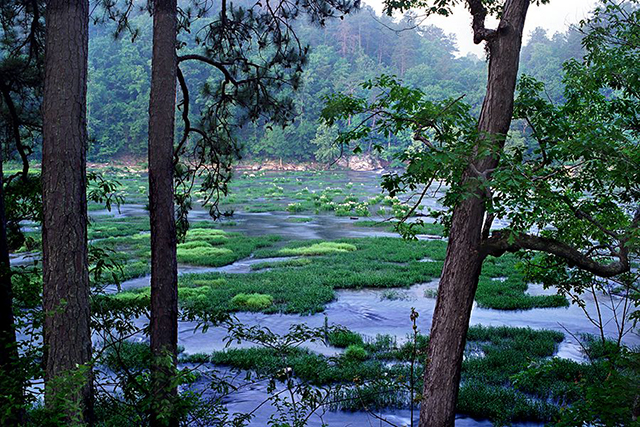The Network for Landscape Conservation 2020 grant awardees for Partnerships work to implement community-grounded conservation at the necessary landscape scale. Funding enables these Partnerships to accelerate efforts to build enduring, place-based, collaborative conservation efforts that protect the ecological, cultural, and community health of the landscapes they call home.
One of the winners of this year’s award is the Alabama River Diversity Network, a project supported by eminent biologist and naturalist E.O. Wilson, who spent a good portion of his formative childhood years in the area.


“This is the landscape that helped inspire E.O. Wilson to become one of the world’s great scientists and naturalists,” said William Finch, Principal Conservation Advisor for the E.O. Wilson Biodiversity Foundation and member of the Alabama River Diversity Network. “It’s the landscape that helped shape his (and consequently the world’s) ideas of biodiversity.”
The Alabama River and its tributaries form a watershed that stretches over 7 million acres in southern Alabama from Montgomery and Selma to the Gulf Coast. This is one of the most biologically diverse aquatic basins in North America, and a national center for oak, hickory, and woody species diversity.
Landscape and human experience are inextricably intertwined here: some of the largest pre-Columbian settlements in North America were located here and this landscape was a seedbed for the Civil Rights movement. Today, it remains a hotspot for rare and critically endangered species, and while once one of the richest regions in the country in the mid-19th century, it is now one of the most impoverished areas in the nation.
The Alabama River Diversity Network works to conserve the unique biological, cultural, and historical resources of the Alabama River watershed in a manner that also honors the cultural and human diversity of the basin.
“This basin is not only one of the most biodiverse in the country, it is also one of the great centers of human history,” Finch said. “We now understand that truly appreciating the diversity of this basin requires seeing it with the eyes of diversity – understanding how the diverse people of this region interacted with the landscape, and appreciating that if we’re ever going to really preserve it, we have to reconnect those cultures with the land that inspired them.”


Funding support will enable the Network to hire a Coordinator and facilitate planning at the landscape scale to integrate conservation, cultural, and historic preservation priorities. Funding will also support efforts to build deeper engagement with Indigenous partners, and to build collaboration with partners working on Civil Rights and Social Justice issues within the landscape. This support will accelerate the efforts of the Network—in a landscape that is a cradle of biological diversity and the American Civil Rights movement—to showcase a new model of conservation that views biological diversity through the eyes of human diversity.
“The Alabama River Diversity Network is a partnership of multiple organizations — scientists, promoters of national parks, veterans of Civil Rights, representatives of the Muskogee Nation, conservationists — dedicated to preserving and promoting the natural and human heritage of the region,” Finch said. “It’s that kind of intersection of human history and biodiversity that we’re discovering up and down this corridor, and it is why we are here.”


